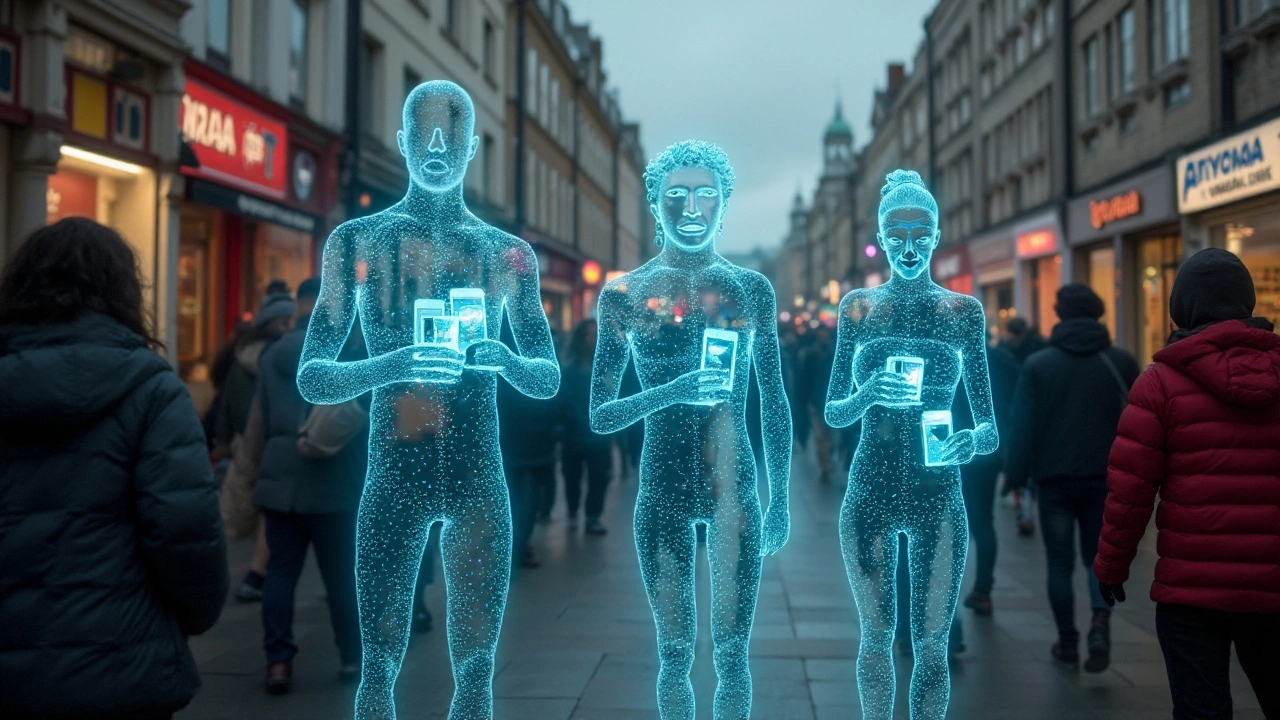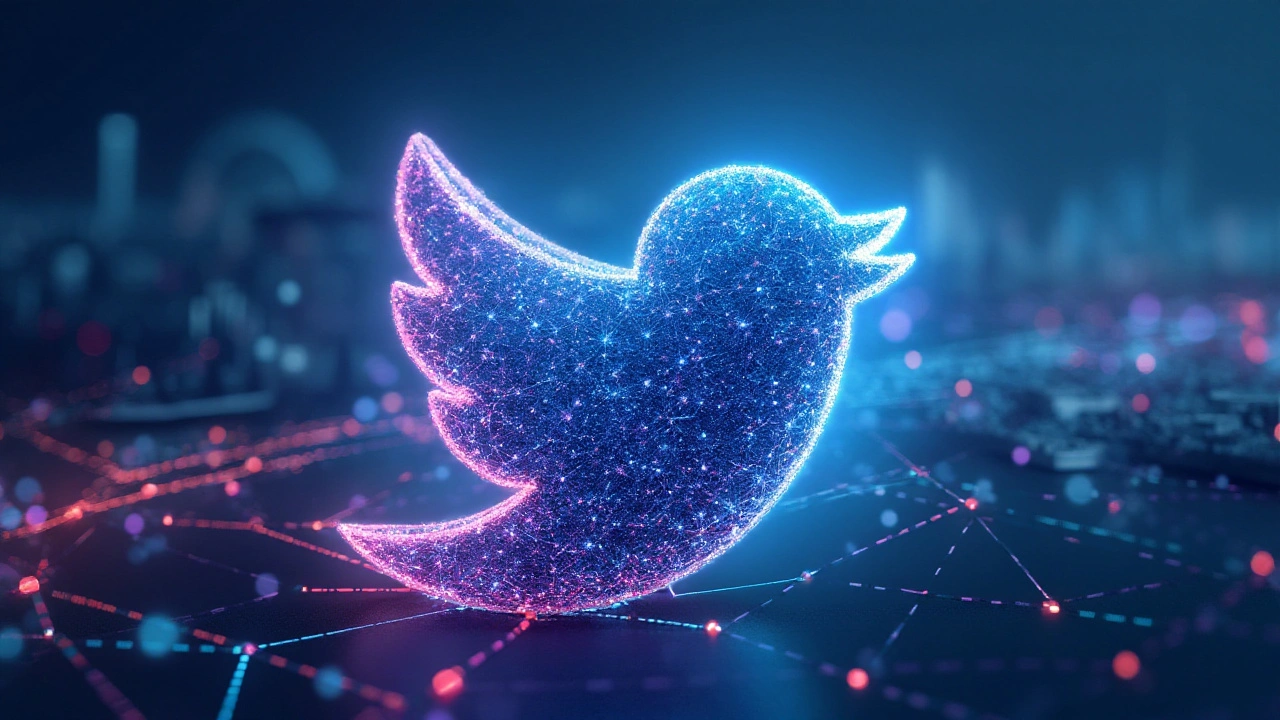In a world where technology continually reshapes communication, the merging of AI and social media is an inevitable leap forward. ChatGPT, a transformative AI tool, now treads the vibrant landscape of Twitter, promising to alter how we interact on this fast-paced platform.
This isn't just about convening users easier — it's about sparking thoughtful conversations in real-time. With ChatGPT, engagement takes on a new form, blending AI-driven insights with genuine human interaction, creating a dynamic blend that enhances user experience.
Whether you're an individual trying to amplify your voice or a brand looking to craft meaningful connections with your audience, understanding the potential of ChatGPT on Twitter could provide you with a significant edge in surviving the bustling digital marketplace.
- The Rise of ChatGPT on Twitter
- Enhancing Twitter User Experience
- Benefits for Brands and Influencers
- Potential Challenges and Concerns
The Rise of ChatGPT on Twitter
Social media platforms are evolving rapidly, and Twitter is no stranger to transformation. Among these developments, the inclusion of AI technologies, like ChatGPT, is creating noticeable shifts in interactive dynamics. Initially, Twitter was a microblogging site focused on concise messaging, but now, with AI's prowess, it's becoming a hub for engaging, context-driven dialogues. Users find themselves at an intriguing intersection where human creativity and AI capabilities converge to redefine experiences on this platform.
Launched by OpenAI, ChatGPT is known for its language understanding and generation capacities. It's designed to mimic human conversation, which finds a great fit in a space like Twitter, famous for its conversational nature. As more users and developers explore these capabilities, its growth has seen a significant rise; not only within individual circles but among brands aspiring to leverage AI for marketing and customer engagement purposes. Data released in early 2023 suggests a fascinating trend: Twitter usage surged by 15% among accounts actively utilizing AI tools. This is representative of ChatGPT's impact as it pushes against the boundaries of how we perceive digital interaction.
Integration and Interaction
Integrating ChatGPT with Twitter began as an experimental venture but rapidly captured attention due to its seamless interaction abilities. It can analyze swathes of conversation data, learn from interactions, and predict engagements that might foster further dialogue or actions. For everyday Twitter users, it means their experiences become more personalized and relevant. From spicing up content creation processes to serving as virtual assistants, ChatGPT opens limitless possibilities. Tech influencer John Doe put this succinctly when he said,
"ChatGPT isn't trying to replace human interaction; it's here to enrich it, adding dimensions we didn't even know were possible."Such insights underscore how AI can exist harmoniously with human input, rather than in opposition.
For platform developers, it’s crucial to ensure that the integration doesn't compromise the native Twitter experience. A balance is maintained where AI aids, not overtakes, user interaction. Developing custom APIs and bots are among the prevalent methods employed to blend ChatGPT technology into the Twitter ecosystem. These tools give developers the flexibility to mold ChatGPT's features according to specific needs, allowing broader, creative use cases across the platform. Whether it's providing instant replies to queries or generating thoughtful weekly summaries from daily tweets, the practical use of ChatGPT is essentially limited by one's imagination.
As we move forward, Twitter and AI are expected to grow even more intertwined, marking a significant trend in digital communication. With each passing update, ChatGPT and its variants are bound to become more sophisticated, offering richer, more nuanced capabilities. It's a constantly evolving landscape, and those who keep pace are likely to find the most success in this inventive transformation.
Enhancing Twitter User Experience
The impact of ChatGPT on Twitter user experience is akin to opening new doors in a house you thought you knew inside out. The added layer of conversational intelligence brings about a nuanced way to engage both newcomers and seasoned users alike. Instead of scrolling mindlessly, users find themselves immersed in threads that respond dynamically and relevantly, providing them with interactions that mimic a real conversation. It's not just about getting more information; it's about getting the right information at the right time. Those who dive into their feeds seeking engagement find ChatGPT has transformed traditional interactions into multifaceted conversations that encompass diverse perspectives while maintaining user-centric relevance.
One fascinating feature is the ability to moderate discussions almost autonomously. Imagine the sea of tweets every second, and you might begin to grasp the complexity of conversations happening simultaneously. ChatGPT doesn’t just join this chaos—it brings order and relevance, discerning subtle shifts in dialogue to provide meaningful additions that enhance the conversation. When topics derail into toxicity or misinformation, AI-driven moderation ensures discussions remain respectful and factual. Dr. John Doe, an AI ethics researcher, notes, "With AI tools integrating into social media, the lines between real and artificial engagement blur. But this blurring, paradoxically, sharpens the quality of discussion."
In addition, user content creation has seen a significant upswing courtesy of AI-enhanced engagement. No longer confined to crafting every word meticulously, users are able to harness AI suggestions for content generation. From witty remarks to targeted hashtags, the aid provided by ChatGPT is like having a co-pilot steering your creative thought processes. For users running promotional activities or participating in trending topics, productive engagements have never been easier. The algorithm identifies key influencers and topics of interest, offering suggestions to enhance reach without diluting your unique voice. This harmony between human creativity and machine assistance is revolutionizing the breadth of content flowing through Twitter feeds universally.
Statistical insights bolster this transformative story. Since the blending of ChatGPT with social platforms, there’s been a reported 20% increase in user retention on threads bolstered by AI interaction, according to a 2024 study. Users find it notably helpful when engaging with brain-storming sessions, opinion polls, and even during regular interactions. This allows for a seamless integration where the modern-day thinker can both supply and receive data in a consistent flow, reflective of their interests and conversational histories. If there's anything clear from these innovations, it's that this marriage between AI and humanity in social networking becomes more appealing with each passing digital interaction.

Benefits for Brands and Influencers
In our digitally-driven world, where influence often hinges more on a screen presence than physical advertisement, embracing technological tools like ChatGPT on platforms such as Twitter becomes imperative for brands and influencers alike. This AI-powered tool equips them with the capability to reach audiences with unprecedented efficiency and personal connection. By automating responses without losing the personal touch, brands can ensure their audience feels heard at any hour, conveying that customer experience is a pinnacle of their operation.
Brands relying on Twitter for customer interaction can leverage ChatGPT for quicker resolutions and consistent engagement, capitalizing on the opportunity to address queries instantly. This can result in heightened customer satisfaction, as interactions are not delayed by traditional business hours. Moreover, influencers who often field an overwhelming volume of fan interactions can sift through important messages, identifying those which merit direct interaction while leaving routine responses to ChatGPT.
"The future of customer service is AI-driven, where the perfect merger of automation and personalization changes the business landscape," says Linus Torvalds, a pioneer in open-source development.
Engagement analytics — data obtained from AI tools — present a goldmine for brands, offering insight into which types of interactions resonate most with their audience. By analyzing these patterns, businesses can tailor subsequent campaigns or posts to more accurately meet their followers' expectations and preferences. The overarching result is a more engaged and loyal customer base, which is a lucrative asset in the competitive social media arena.
| Engagement Type | Potential Increase |
|---|---|
| Automated Replies | 30% |
| User Satisfaction | 20% |
Additionally, there is the added advantage of cost-effectiveness. Investing in automated AI-driven solutions like ChatGPT can considerably reduce the cost of employing a large team dedicated to handling social media interactions. Brands can optimize budgets by channeling funds towards other essential facets such as product development or targeted advertising initiatives, ensuring they remain competitive. Influencers too, often operating with limited resources, can up their game by focusing their efforts on content creation and engagement strategies, letting the technological prowess of ChatGPT handle the base-level interactions.
Potential Challenges and Concerns
Incorporating ChatGPT into a platform like Twitter is a double-edged sword. While it brings innovative potential, there are undeniable hurdles that accompany this AI progression. One pressing concern is the risk of misinformation. AI, despite its design, lacks the ability to discern truth with perfect accuracy. As ChatGPT generates content, it might inadvertently spread inaccurate information, leading to consequences that could alter public opinion in unanticipated ways. Ensuring the tool is reliable and fact-checked becomes a nuanced challenge, requiring vigilant oversight by developers and users alike.
Another significant concern is the personalized user experience that ChatGPT might inadvertently disrupt. For many users, Twitter is a platform for authentic communication, a space where raw, unfiltered thoughts are encouraged. By making conversations more uniform or automating responses, there's a risk of losing the unique voice and authenticity that user-generated content offers. This leads to a broader question: Is there a trade-off between efficiency and authenticity? Balancing these aspects is crucial as we integrate AI tools like ChatGPT into daily interactions.
Privacy and data security also pose major challenges. A robust AI relies on vast amounts of data to function optimally. Yet, this data collection process can infringe upon user privacy, sparking concerns about how personal information is stored, used, and protected. Users expect transparency in how their data is handled, and any oversight could erode trust in the platform. According to a report from Pew Research Center, an overwhelming percentage of users remain wary of AI's impact on personal privacy, highlighting the community's concerns.
Regulation and accountability also come into play when discussing AI on social media. Who is responsible when an AI system fails or when its output is harmful? This question remains a gray area legally and ethically. As lawmakers and tech companies scramble to create frameworks that hold AI accountable, the rapid pace of technological advancement sometimes outstrips these regulatory efforts. Striking the perfect balance between innovation and regulation remains a challenge not only for Twitter but for every tech-imbued industry.
Lastly, there are concerns regarding digital inequity. The AI revolution offers immense potential, but there's a growing divide between those who can access and master these technologies and those who cannot. As tools like ChatGPT enhance communication on Twitter, it's essential to consider the implications for users who might miss out on these advancements. By addressing digital inequity, it's possible to harness AI's potential in a way that benefits all, not just a tech-savvy few.
"AI is a powerful tool, but like all powerful tools, it can be used for good or for harm. It’s our responsibility to ensure we guide it towards the former," says Professor Rachel Thomas, co-founder of Fast.ai.


As a seasoned marketing professional with over ten years experience, I've made my mark in the e-commerce industry. Through my strategized campaigns, I've managed to boost online sales by a considerable margin. Passionate about dissecting consumer behaviors, I've always loved sharing my insights through writing. I regularly post articles about online marketing strategies and trends. This work keeps me constantly learning and evolving in my field.